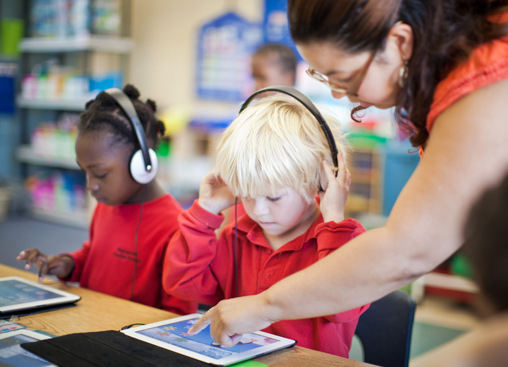In transmedia storytelling, children follow a story across multiple platforms while being exposed to the same set of skills, reinforcing their learning. They may try new approaches to math and reading, and transmedia play encourages them to ask and answer questions, make connections among information, and share their knowledge with others. Transmedia can be a great tool for teaching children in out-of-school settings.
The experiences of PBS stations implementing resources from The Ready To Learn Initiative locally suggest that expanded learning providers and public media stations can make effective use of PBS KIDS transmedia content by:
1. Forging strong partnerships. Public media stations rely on expanded learning providers to help reach underserved kids and their families with PBS KIDS and other transmedia content. Stations offer training and resources to familiarize front-line staff with instruction and use of that content. A director of education or outreach coordinator often serves as the point of contact.
2. Making use of turn-key resources. Informal educators have little time to develop new curricula and lesson plans, and may lack familiarity with transmedia content and related technology. Local public television stations can offer ready-to-use materials, such as information sheets, activity cards, art supplies, and books, that can be disseminated among classroom and informal educators.
3. Sharing resources. Technology is expensive. A program site might be able to afford only one smart board, or wireless internet access is unreliable. One solution is to invest in a single, comprehensive set of resources and share them across sites. Many PBS stations involved in The Ready To Learn Initiative purchased items for a “mobile media lab”—laptops, Mi-Fi wireless sticks, videogame consoles, etc.—that they lent to partners on a rotating basis.
4. Getting parents involved. Kids are more excited to use transmedia content and more likely to continue learning at home if their parents or caregivers are a part of the process. Educating parents at family nights and involving them as participants in activities (e.g., through a “Mommy & Me” program) helps them become familiar with the technology and know-how to create engaging educational experiences for their children at home.
Learn more about using transmedia in out-of-school settings at http://www.afterschoolsystems.org/content/document/detail/3871/ and discover free transmedia resources for use in your program at http://www.pbskidslab.org.
By: Nina Agrawal, Every Hour Counts, and Devon Steven, Corporation for Public Broadcasting

